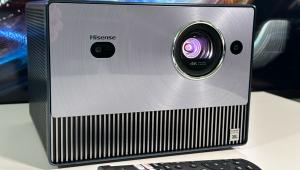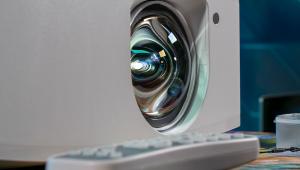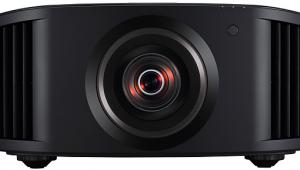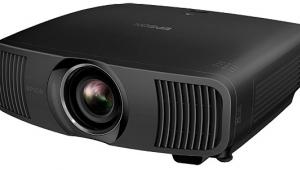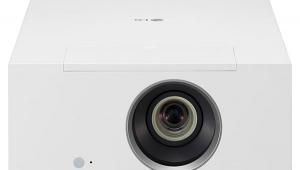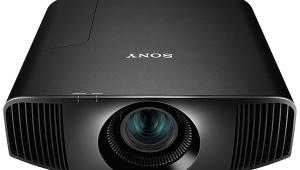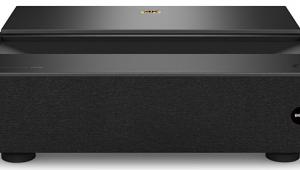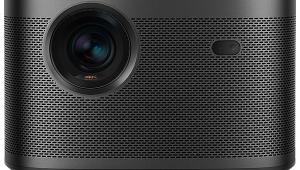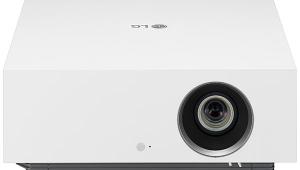Sony VPL-VW285ES LCOS Projector Review

AT A GLANCE
Plus
Native 4K
Superb resolution and color
Impressive HDR
Minus
No dynamic iris
No lens memories
THE VERDICT
The Sony VPL-VW285ES brings true native 4K resolution down to a price more viewers can aspire to. Add a generous helping of UHD’s wider, deeper color and high dynamic range, and it’s hard to resist.
Ultra HD with true native 4K resolution on its imaging chips has been, so far, difficult to do at a cost most consumers can accept. New DLP-driven 4K projectors that utilize pixel-shifting, which delivers the full UHD pixel count in successive half-frames of diagonally shifted pixels, have recently come on the market at prices as low as $2,000. But native 4K projectors that can put all 8 million pixels in a UHD frame on the screen simultaneously have been pricey, with the cheapest to date coming in around $8,000.
At last September’s CEDIA Expo, however, Sony introduced three true-4K projectors including the VPL-VW885ES (laser-lit, and at $25,000, still astronomically priced), the VPL-VW385ES ($8,000), and the subject of our review, the VPL- VW285ES ($5,000). That last one is hardly a Black Friday special, but it’s definitely the most affordable true native-4K consumer projector to date. So what, exactly, did Sony sacrifice from its pricier models to drive down the cost? Let’s have a look.
Features
The VPL-VW285ES is a three-chip SXRD design. (SXRD is Sony’s version of LCOS, which stands for Liquid Crystal on Silicon.) As with all other Sony 4K models, its imaging chips have a resolution of 4096 x 2160, rather than the consumer UHD standard of 3840 x 2160.
Like all 4K (full 4K or pixel-shifted) projectors we’ve seen to date, this one doesn’t offer processing of Dolby Vision high dynamic range content, now appearing via streaming or on some UHD Blu-ray Discs (though Sony claims that its own active HDR image processing does as good a job as Dolby Vision’s dynamic metadata). It does provide both HDR10 and HLG (Hybrid Log-Gamma) HDR processing; HLG is used sometimes for streaming and soon for 4K broadcasts. The advanced wide color gamut demanded by UHD is provided by Sony’s Triluminos color technology.
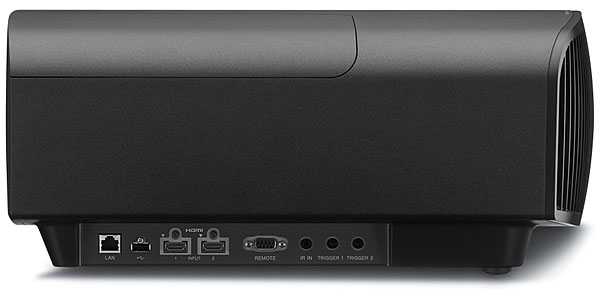
The projector lacks any type of iris, either fixed or dynamic—the latter useful for enhancing black levels. This is one of the primary ways the pricier VPL-VW385ES trumps the 285ES: The former has a selectable dynamic iris. Both projectors have powered lens focus, zoom, and shift, but only the 385ES includes recallable lens memories, a feature that may be high on your list if you enjoy a 2.35 wide format screen. (Neither model has an automated lens cover.) The 385ES also offers an auto calibration feature. That projector’s initial calibration must be done manually, but the auto feature is said to then analyze the colorimetry for any shift that occurs as the lamp ages and allow the user to reset the internal colorimetry to factory levels without affecting any external calibrations.
For the VPL-VW285ES, Sony claims a lamp life of up to 6,000 hours. But getting that far will depend on how you use the projector and how tolerant you are of the lamp’s slow but inevitable dimming over time. This could be a concern for maintaining those HDR highlights; you’ll want all the brightness you can get, for as long as the lamp will give it.
While full performance from all possible current UHD sources requires inputs capable of handling a bandwidth of 18 Gigabits per second, this projector maxes out at 13.5 Gbps. According to Sony, it can display a 60-hertz, 4K, HDR10 source at 4:2:0 color subsampling, but only in 8-bit color. The only way to get 10-bit color from such a source is to shut off HDR.
For HDR at a reduced 24-Hz frame rate, however, the projector retains the full 10 bits in HDR10. This covers virtually all HDR10-enhanced Ultra HD Blu-rays we know of. UHD/HDR disc sources at 60 Hz are rare. Billy Lynn’s Long Halftime Walk, the only 60-Hz UHD Blu-ray currently avail- able, played glitch-free at 4:2:0, 4K, 60-Hz HDR10, and 8 bits. But this 60-Hz limitation might be a concern with some streaming devices if they’re set to output 4K/UHD/HDR/60 Hz.
An Input Lag Reduction control is also provided (which I didn’t test), but it’s not acces- sible in 4K. And when it’s on, the Motion- flow and noise reduction features aren’t available. The Info menu provides the source input resolution, color sub- sampling, HDR designation, and signal frame rate, but not the bit rate of the source.
The cooling fan was virtually silent in the Low lamp mode. While it’s not totally silent in High (some of Sony’s 1080p designs are quieter), I didn’t find it obtrusive in my large room. And it was no factor at all when audio was playing from the source.
 The remote control is large, with well-spaced, backlit buttons (many
of them providing direct access to frequently used features). And fans
of 3D will be happy to know that
this projector also does 3D, though glasses aren’t included. Sony sells the TDG-BT500A at $50 per pair. Most third-party glasses that conform to the Full HD 3D standard will also work with this projector.
The remote control is large, with well-spaced, backlit buttons (many
of them providing direct access to frequently used features). And fans
of 3D will be happy to know that
this projector also does 3D, though glasses aren’t included. Sony sells the TDG-BT500A at $50 per pair. Most third-party glasses that conform to the Full HD 3D standard will also work with this projector.
Control and Setup
The VPL-VW285ES offers eight Calibrated Presets (picture modes) plus a User preset that defaults to
the same settings as the Reference mode; I used Cinema Film 1 and Cinema Film 2. The Cinema Black Pro feature includes the High/Low Lamp Control and a Contrast Enhancer (High/Middle/Low). Motionflow is Sony’s motion-smoothing feature, which I didn’t use for the usual reason: the soap-opera effect—though Sony says you can minimize this while maintaining some degree of anti-blurring benefit by using the Smooth Low setting. With 4K sources, though (or any lesser source upconverted to 4K prior to the projector), Motionflow offers only one selection, Impulse, which performs gray-frame insertion between the original frames to reduce smear. It didn’t appear to do much in actual use.
The Sony won’t accept 480i sources directly, though it will han- dle 480p. In any event, this can be overcome by upconverting such material beforehand (in the player, set-top box, etc.). If the upcon- verted source was a letterboxed, non-anamorphic DVD, neither of the available 4K options in the Aspect menu (2.35:1 Zoom and Normal) would fill the screen with a correctly proportioned image. However, so-called “enhanced for widescreen” DVDs (by far the majority of DVDs produced) worked fine. There’s no anamor- phic stretch option available with a 4K input.
The Color Temperature options provide both Gain and Bias white balance controls. A color management system (CMS, which Sony calls Color Correction) is also included. An HDR control, when set to Auto, automatically switches the separate Color Space control to a setting appropriate for the source (BT.709 or BT.2020).
An HDMI Signal Format control in the Function menu has two options: Standard Format and Enhanced For- mat. I tried Enhanced, but it produced no changes worthy of comment in the projector’s UHD/HDR performance on test patterns, real program material, or measurements.
A Panel Alignment feature gives you (electronic) control over the convergence of the red and blue imaging panels relative to green. I tried it, but my post-adjustment results differed little from Sony’s good out-of-box alignment.
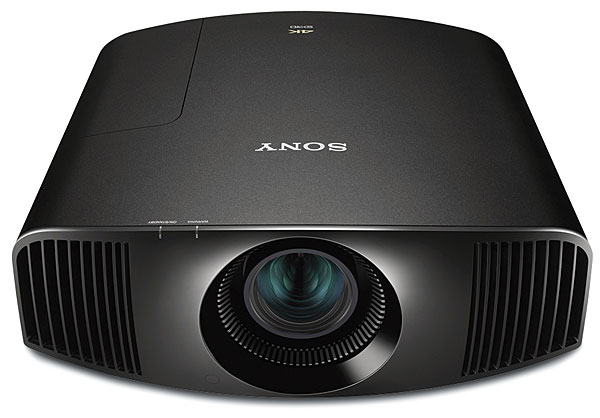
I set up the projector 15 feet from my 96-inch-wide, 2.35:1 Stewart Filmscreen StudioTek 130 screen (gain 1.3). This put it roughly in the middle of the zoom range for the lens. As the Sony senses an SDR or HDR source, it will automatically switch some of the controls between different HD/SDR and UHD/HDR settings in the same Calibration Preset (picture mode). But one control it won’t switch automatically is Lamp Control. I therefore elected to use different Calibration Presets for SDR (Cinema Film 1) and HDR (Cinema Film 2), and I switched manually between them.
First Take
In our standard HD/SDR video tests, the VPL-VW285ES passed both
3:2 HD and 2:2 HD, but it failed MA HD (motion adaptive) with minor, though more visible than normal, jaggies. The SD tests were irrelevant since the projector won’t accept 480i. The Sony passed the clipping tests when the input was 1080p
but clipped below black when the input was 4K/SDR. It passed luma resolution. The projector failed
the chroma resolution test with a 1080p input, though it passed with
a 4K input.
Even straight out of the box, with a few basic adjustments, the Sony was impressive. But the default Brightness setting of 50 was optimistic; it might improve the contrast, but it crushed the blacks a bit too much, particularly in HDR. Even with some adjustment, however (test discs suggested that 55 to 58 worked better for HDR, 53 for SDR), deeply shaded areas on a very few otherwise bright HDR scenes still looked a little crushed in their shadow detail.



